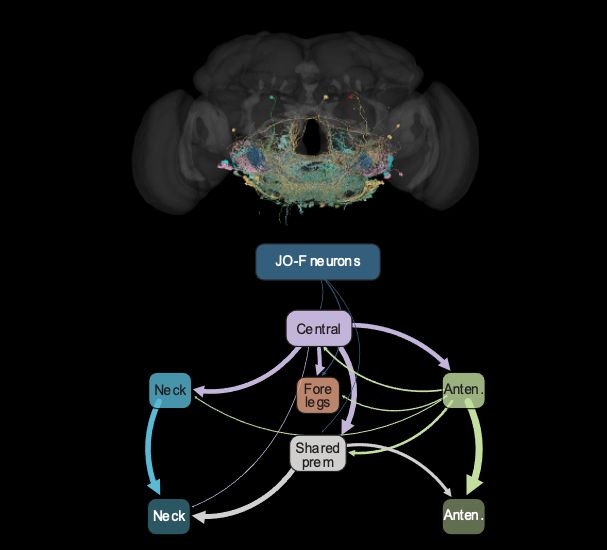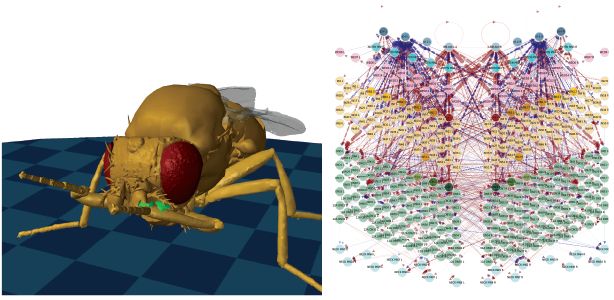“How flies can help us build better robots and AI”
youtube.com/watch?v=kFV6...
Thanks again to the fantastic organizers at TEDxArendal
Special thanks to the people in my laboratory at EPFL past and present without whom none of this would be possible
“How flies can help us build better robots and AI”
youtube.com/watch?v=kFV6...
Thanks again to the fantastic organizers at TEDxArendal
Special thanks to the people in my laboratory at EPFL past and present without whom none of this would be possible

Broadcast inhibition: Suppresses targeted antennal movement to prevent conflicting actions. ⛔️

Broadcast inhibition: Suppresses targeted antennal movement to prevent conflicting actions. ⛔️

@gzmozd.bsky.social identified fly brain networks for body part coordination through experiments, biomechanical modeling, connectomics, and neural network simulations ! 🤖
www.biorxiv.org/content/10.1...

@gzmozd.bsky.social identified fly brain networks for body part coordination through experiments, biomechanical modeling, connectomics, and neural network simulations ! 🤖
www.biorxiv.org/content/10.1...
But exposure to other flies makes them become sociable. We found and recorded specific learning circuits in the brain that regulate this transition. Read more in our new preprint:
www.biorxiv.org/content/10.1...

But exposure to other flies makes them become sociable. We found and recorded specific learning circuits in the brain that regulate this transition. Read more in our new preprint:
www.biorxiv.org/content/10.1...
www.nature.com/articles/s41...
We're excited to present NeuroMechFly v2, a neuromechanical simulation of the fruit fly, Drosophila melanogaster, for exploring artificial neural networks (including connectome-driven models) controlling behavior.
www.neuromechfly.org

www.nature.com/articles/s41...
We're excited to present NeuroMechFly v2, a neuromechanical simulation of the fruit fly, Drosophila melanogaster, for exploring artificial neural networks (including connectome-driven models) controlling behavior.
www.neuromechfly.org
www.epfl.ch/about/workin...
This a topically highly broad search. A rare opportunity.
Come be my colleague!
www.epfl.ch/about/workin...
This a topically highly broad search. A rare opportunity.
Come be my colleague!
"NeuroMechFly 2.0, a framework for simulating embodied sensorimotor control in adult Drosophila"
biorxiv.org/content/10.1...
In which we make our digital fly see, smell, adhere, and navigate challenging terrain

"NeuroMechFly 2.0, a framework for simulating embodied sensorimotor control in adult Drosophila"
biorxiv.org/content/10.1...
In which we make our digital fly see, smell, adhere, and navigate challenging terrain
"Networks of descending neurons transform command-like signals into population-based behavioral control"
x.com/jonasfbraun/...
"Networks of descending neurons transform command-like signals into population-based behavioral control"
x.com/jonasfbraun/...

